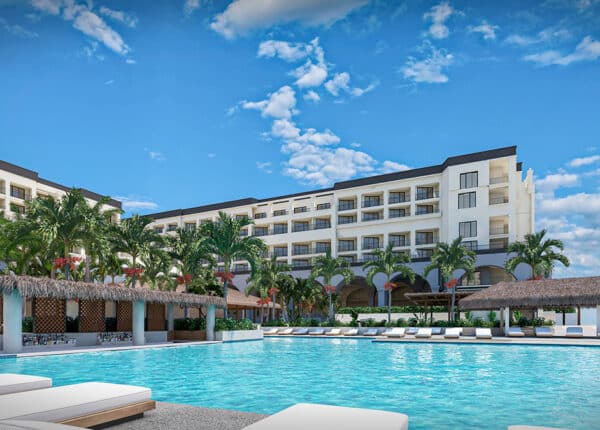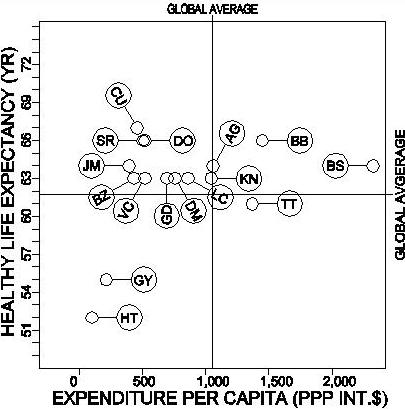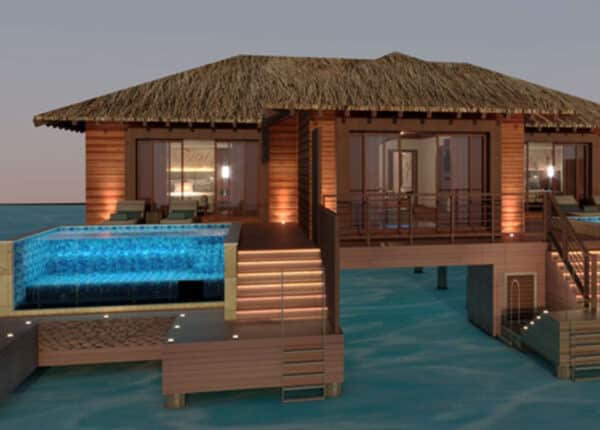By Paul Hay
CJ Contributor
The World Health Organization (WHO) published a ranking of global healthcare systems in their World Health Report 2000. According to an article in the June 29, 2012 edition of the Business Insider entitled “These are 36 Countries That Have Better Healthcare Than The US”:
“So controversial were the results that the WHO declined to rank countries in their World Health Report 2010…”.
WHO’s 2000 report ranked the Eastern Caribbean nation of Dominica at 35, which made it one of those countries that had better healthcare than the United States, which was ranked 37.
This was even more impressive considering that US per capita expenditure on healthcare was ranked 1 and Dominica 70.
WHO’s 2000 report also introduced an indicator called DALE: Disability-Adjusted Life Expectancy. DALE combined mortality data with the health and disability status of populations to determine an equivalent number of years in which life was expected to be in full health.
In that report, the US had a DALE rank of 24, which exceeded that of Dominica, at 26. Cuba had a DALE rank of 33, and Jamaica ranked 36. Health expenditures per capita for the latter two were ranked 39 and 89 respectively.
In Competitiveness In Small Developing Economies: Insights From The Caribbean, Professor Alvin G. Wint – former head of the Department of Management Studies at the University of the West Indies, Mona – dedicated an entire chapter to healthcare in Jamaica.
Referring to Jamaica’s ranks for DALE and per capita health expenditure, Prof. Wint stated that: “Jamaica has the second-largest (positive) gap (of 53 ranks) between its DALE ranking and its per capita health expenditure among all 191 WHO member countries”.
In fact, 9 out of the 16 Caribbean WHO member states had DALE ranks of at least 57, which put them in the top third of all the global healthcare systems ranked. So, the Caribbean does have a distinguished reputation to preserve in healthcare delivery.
However, WHO’s discontinuation of its overall health system performance ranking has made evaluating performance of one system against another and one period over another very difficult. Nevertheless, some very useful observations can still be made without this ranking.
For this purpose, reference is made to WHO’s 2012 world health statistics, which is its most current data. DALE is now referred to as HALE: an acronym for Health Adjusted Life Expectancy; and, per capita healthcare expenditure at purchasing power parity (PPP) is taken for the year 2011.
Globally, HALE is 61.7 years for males and females, but 67.1 years in the “Americas”: the region in which the Caribbean has been grouped. Global health expenditure per capita (PPP) was Int. $ 1,055.20 in 2011, as against Int. $3,540.80 in the “Americas”.
In recognition of the link between healthcare performance and income level, WHO ‘s country data is disaggregated into four income levels: high, upper-middle, lower-middle, and low-income. The HALE and health expenditure per capita for the 16 Caribbean WHO member states is shown in the table below.
Cuba continues to excel. But, Dominica and Jamaica have not fared as well. Jamaica’s HALE now exceeds that of Dominica; and HALEs in Barbados, Dominican Republic, and Suriname now exceed that of Jamaica, even though they were ranked 53, 79 and 77 respectively in 2000.
Guyana and Haiti remain two of the Caribbean’s worst performers with regard to HALE. The Bahamas, which was formally the other poor performer, has significantly improved its performance, and has subsequently been replaced by Trinidad and Tobago.
Regional averages for the respective income levels of the “Americas” are also shown for comparison in the table above. Regional averages for HALE show a distinct improvement with successive increases in income level, but this pattern is only distinct up to the upper middle-income level for the Caribbean.
Except in the upper middle-income Organization of Eastern Caribbean States (OECS) of Dominica, Grenada, Saint Kitts, Saint Lucia, and Saint Vincent, HALEs in the remaining upper middle-income Caribbean states either equal or exceed that of the high-income ones.
Dependent Caribbean high-income overseas territories are not listed in WHO data. So, a comparison of their performance to these upper middle-income states is not possible. But, the middle-income OECS outperformed Trinidad and Tobago which, with the exception of St. Kitts, was also the case in 2000.
HALEs in the Caribbean are typically lower than wider regional averages. The only exceptions are Cuba, Dominican Republic and Suriname in the upper-middle income category and Belize in the lower-middle income category.
But, health expenditures per capita are typically lower. Excluding Saint Vincent, this is not the case in the remaining upper middle-income OECS, nor is it the case in the lower-middle income and low-income states. Their per capita healthcare expenditures exceed their respective regional averages.
In the high-income category, Antigua and Barbuda had the lowest healthcare expenditure per capita and the Bahamas the highest, although both have the same HALE. In the upper middle-income category, Jamaica has the lowest healthcare expenditure per capita and St. Kitts the highest.
This pattern of lower HALE and per capita health expenditure is characteristic of global performance versus that of the “Americas”. Data from the table was therefore plotted against that of the global average, and is shown in the figure below.
The box is divided into quadrants. The horizontal line represents the global average HALE, and the vertical line represents the global average health expenditure per capita. Therefore, the point at the intersection of these lines is the global average for HALE and health expenditure per capita.
Points above the horizontal line represent HALEs higher than the global average. Points to the left of the vertical line represent health expenditures per capita lower than the global average; and vice versa. So, the quadrants represent four distinct conditions.
The top left, occupied by 11 states, indicates that their HALEs equal or exceed the global average and their per capita health expenditures are lower than the global average. The top right, occupied by Barbados and The Bahamas, indicates their HALEs and per capita health expenditures are higher.
The bottom left, occupied by Guyana and Haiti, indicates their HALEs and per capita expenditures are lower. The bottom right, occupied by Trinidad and Tobago, indicates that its HALE is also lower, but its per capita expenditure is higher than the global average.
It is now obvious that most Caribbean states have higher than average healthy life expectancies, though at various efficiencies. As stated before, Haiti, Guyana, and Trinidad and Tobago are the worst performers; and Cuba is the best. But, the other states can be organized into three HALE groups.
Dominica, Grenada, St. Kitts, St. Lucia, St. Vincent, and Belize all have HALEs of 63, with Belize being the most efficient, with the lowest per capita health expenditure, and St. Kitts the least. Belize is the only lower middle-income economy in this group of otherwise upper middle-income OECS.
Antigua and Barbuda, the Bahamas, and Jamaica all have HALEs of 64, with Jamaica being the most efficient and The Bahamas the least. As before, Jamaica is the only upper middle-income state in this group of otherwise high-income states.
Finally, Barbados, Dominican Republic, and Suriname all have HALEs of 66, with Suriname being slightly more efficient than the Dominican Republic, and Barbados the least efficient: Barbados being the only high income state in this group of otherwise middle-income states.
For these groups, the trend is for the state (or states) from the lower-income category to be the most efficient at using its health expenditure. But, it is remarkable that the Dominican Republic, Suriname, Barbados and the Bahamas have transformed their systems in the 12 years following their ranking.
It would have been instructive to examine how these four managed this achievement. Instead, reference is made to Professor Wint’s findings on Jamaica from the WHO’s 2000 report, which states:
“…Jamaica’s health system has performed relatively well, and is reasonably competitive, because the structure of the health system places a greater emphasis on primary care than systems that are more driven by a hospital and secondary/tertiary care focus.”
This flies in the face of Caribbean ambitions to offer Medical Tourism, with its emphasis on systems driven by a hospital and secondary/tertiary care focus; and indicates that the Caribbean’s lower per capita health expenditures might not translate into a competitive advantage in Medical Tourism.
The Caribbean has also not performed favourably, in comparison with other nations in the “Americas”, with regard to healthy life expectancy. So, Caribbean governments in general need to improve their respective healthcare systems.
They need to prioritize healthcare delivery to their own populace and leave diversification of healthcare services to the private sector and, better yet, to foreign direct investment. Otherwise, how will the local healthcare system improve, and who else will drive this improvement?
Dominica has already proven that it is possible to have better healthcare than the US with better use of the resources available in the Caribbean. So, why should we be content with simply being above the global average? We have the potential for much better.
Paul Hay, a Caribbean Journal contributor, is the founder and manager of Paul Hay Capital Projects.









